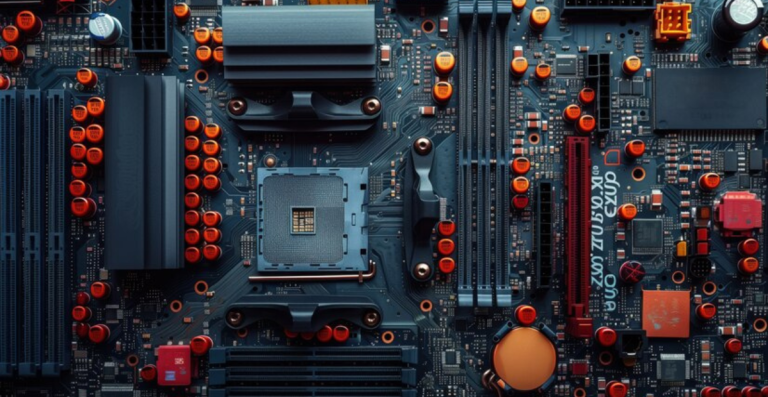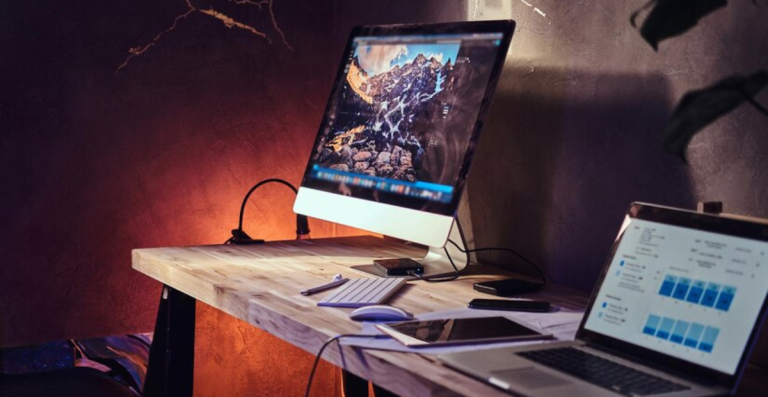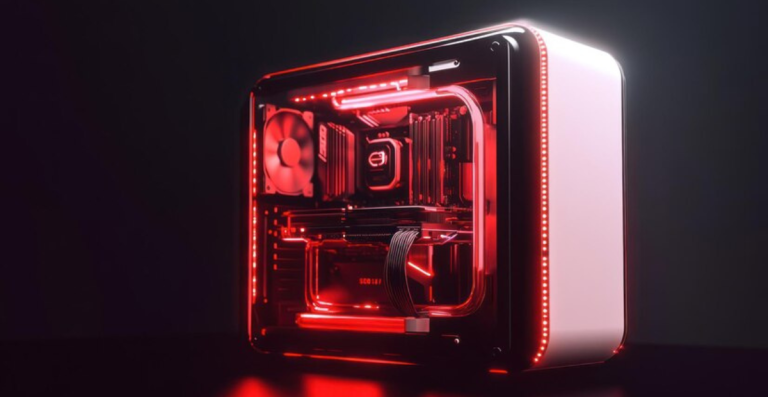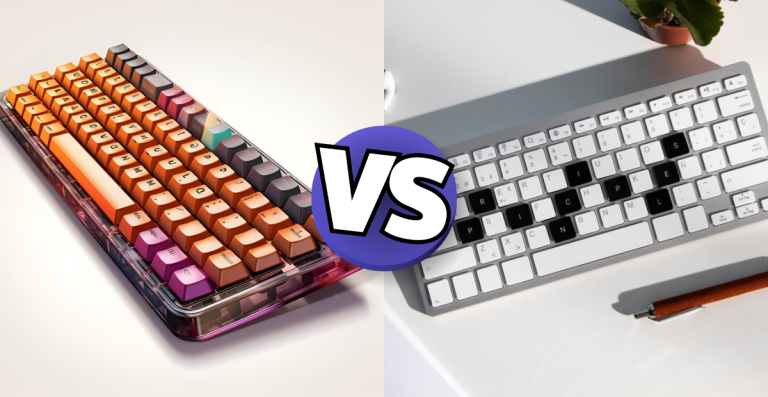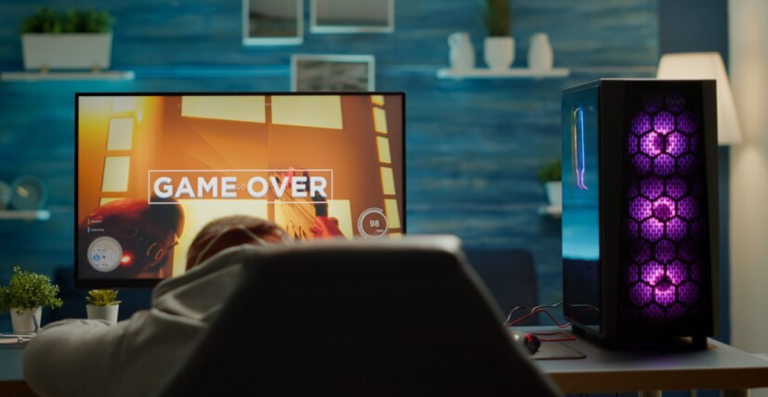Most Valuable Gaming Collectibles: Top Rarities Worth Millions in 2025
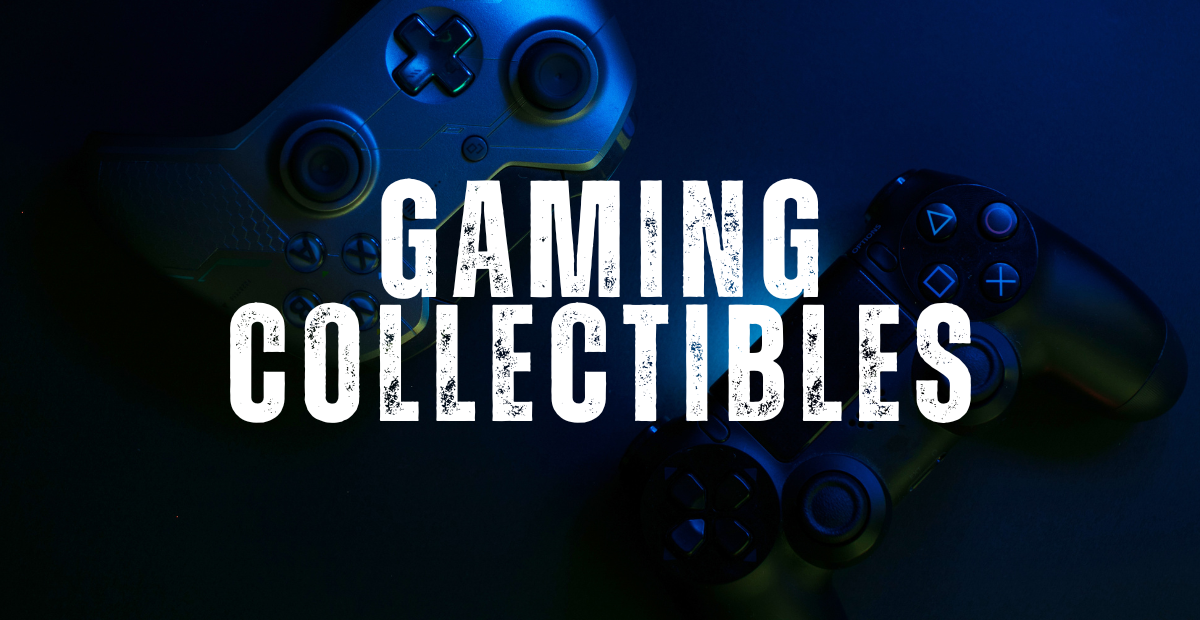
To some, gaming might be considered a cultural movement, a trove of memories, and perhaps even a treasure trove of Most Valuable Gaming Collectibles. A very congruous phenomenon has emerged from the vintage gaming scene: Making waves in auctions by setting shocking high prices and becoming the pièce de résistance in elite collections.
Whether you were busy as a kid blowing into NES cartridges or are a newcomer tracing the history of gaming, the value of such artifacts cannot be denied.
I am going to elaborate on some of the most valuable video game collectibles that are creating an impact this year. These collectibles are not just artifacts but landmarks in history; objects of tech art that combine aspects of rarity, condition, and cultural significance.
Each instrument-from sealed cartridges to forgotten prototypes, holds its unique tale about evolution, nostalgia, and the increasing potential for investments in gaming history.
So, whether you have your sights set on a sealed Super Mario or you wonder how a failed console such as the Virtual Boy made it onto this list, let’s walk through these Most Valuable Gaming Collectibles that turned childhood favorites into million-dollar treasures.
1. Sealed Super Mario Bros. Cartridge
Among all retro gaming treasures, the sealed Super Mario Bros. cartridge stands as a timeless icon. Not only did it define the platforming genre, but in today’s collector market, it has also become a gold standard for investment-grade video game memorabilia. The moment a pristine, factory-sealed copy hits the auction block, it draws attention from museums, private investors, and passionate gamers alike.
Record-breaking $2 million sale
The gaming world was stunned when, in 2021, a sealed copy of Super Mario Bros. for the NES sold for a record-breaking $2 million. This sale redefined the ceiling for collectible games, placing Mario right alongside some of the most expensive pop culture artifacts in history. Facilitated through Rally, a collectibles investment platform, the transaction marked a new chapter in how vintage games are valued in the modern world.
Rise in value over time
This wasn’t an overnight leap. Just a year prior, the same title had sold for $660,000—already a massive figure. As more collectors entered the space and platforms like Wata Games began standardizing condition grading, values skyrocketed. Early production variants with unpunched hang tabs or rare sealing styles became exponentially more desirable, driving up prices.
Historical relevance and condition importance
Released in 1985, Super Mario Bros. helped revive the North American video game industry. Its cultural significance, combined with the near impossibility of finding untouched, original copies, makes sealed editions priceless. Collectors often treat these cartridges like fine art, kept in climate-controlled cases, never opened, and admired for their preservation.
2. Stadium Events (NES)
Few games carry as much mystery and myth in the retro gaming community as Stadium Events. This title isn’t just rare, it’s legendary. Developed by Bandai and briefly sold in select U.S. stores in 1987, it was pulled from shelves shortly after release, making sealed copies one of the holy grails of Nintendo collecting.
Recall and rarity
What makes Stadium Events so incredibly rare is its abrupt recall. When Nintendo acquired the rights to the Family Fun Fitness mat used with the game, they rebranded both the mat and the game under the World Class Track Meet name. As a result, original Stadium Events copies were pulled and destroyed or simply never sold. It’s estimated that fewer than 200 copies exist today, with even fewer in sealed or complete condition.
Auction history
Prices for this game have consistently shocked even seasoned collectors. In 2017, a sealed copy fetched over $40,000. A few years later, a near-mint boxed copy sold for more than $100,000. When sealed copies come up for auction, which is extremely rare, they often receive international bidding attention. The grading, especially from companies like Wata or VGA, heavily influences final sale prices.
Collector stories and grading impact
Collectors often describe finding Stadium Events as hitting the jackpot. Stories of discovering copies at garage sales or in attic boxes have fueled the game’s mythical status. But grading can make or break its value. Even a slightly damaged box can reduce the worth by tens of thousands. For those lucky enough to own a pristine version, it’s not just a game, it’s a historical asset.
3. Sealed Super Mario 64
If there’s one title that perfectly captures the leap from 2D to 3D gaming, it’s Super Mario 64. Released in 1996 as a launch title for the Nintendo 64, this game redefined platforming and helped shape modern 3D gameplay. But in recent years, it’s not just praised for its innovation, it’s become one of the most expensive collectibles in gaming history.
$1.56 million record
In 2021, a sealed and near-perfect graded copy of Super Mario 64 sold at auction for a jaw-dropping $1.56 million. The sale stunned the gaming world. Though widely available in its day, finding a factory-sealed copy with a high grade is nearly impossible. This record-breaking sale placed Mario 64 among the top-tier investment collectibles, right alongside the original Super Mario Bros.
Significance of Wata grading
The astonishing price was made possible by the game’s 9.8 A++ grade from Wata Games, a company known for its meticulous evaluation standards. This rating essentially confirmed the game as one of the best-preserved retail copies in existence. For collectors, a high Wata score isn’t just a detail. It’s a multiplier that can push a collectible into six or seven figures.
Cultural and gameplay legacy
Beyond its monetary value, Super Mario 64 holds a permanent spot in gaming history. Its open-world design, innovative controls, and unforgettable soundtrack have made it a timeless classic. For many gamers, it wasn’t just a game, it was a moment that marked the future of gaming. Owning a sealed copy of this title means preserving a pivotal point in interactive entertainment history.
4. Nintendo PlayStation Prototype
Among all gaming collectibles, few are wrapped in as much mystery and intrigue as the Nintendo PlayStation prototype. This hybrid console represents a moment when two giants in the gaming industry almost joined forces. For collectors and historians alike, it’s more than just rare, it’s a piece of what could have been.
Background of the Nintendo-Sony partnership
In the early 1990s, Nintendo partnered with Sony to create a CD-ROM add-on for the Super Nintendo. The collaboration was meant to bring Nintendo into the emerging world of disc-based gaming. However, after some disagreements, Nintendo backed out of the deal and Sony went on to develop its system, which later became the original PlayStation. Only a few prototypes of the original Nintendo PlayStation were ever built before the project was scrapped.
Surviving unit and value
For years, many believed all the prototypes had been lost or destroyed. That changed when one functioning unit surfaced in the hands of a private collector. This single known console was put up for auction in 2020 and sold for $360,000. The sale was historic, not just because of the price, but because it confirmed that this piece of gaming history truly existed and still worked.
Collector reactions and accessory value
Collectors were quick to recognize the importance of the Nintendo PlayStation. The console came with a cartridge slot and a CD drive, offering a glimpse of what the future might have looked like if Nintendo and Sony had stayed together.
Accessories that came with the prototype, such as controllers and cables, also held significant value on their own. To this day, the surviving unit remains one of the most talked-about and analyzed pieces of retro tech in the collecting world.
5. Atari 2600 Console
Before gaming was a billion-dollar industry, there was the Atari 2600. For many, this console was their very first window into the world of video games. Its wood-paneled design and joystick controller are iconic, instantly sparking memories of late nights playing blocky but addictive games. Today, the Atari 2600 is not just a nostalgic symbol, it’s a prized collectible with certain versions and games fetching surprising prices.
Heavy Sixer model
One of the most sought-after versions is the original Heavy Sixer. Named for its six-switch panel and sturdy build, this early model was only manufactured during the first production run. It’s heavier, more robust, and considered by collectors to be the purest version of the console. Finding one in great condition, especially with its box and paperwork, is a rare treat that significantly boosts its value.
Rare games like Air Raid and Quadrun
Some games released for the Atari 2600 are now worth far more than the console itself. Titles like Air Raid, with its distinct blue T-handle cartridge, have sold for tens of thousands of dollars. Quadrun is another highly prized game, known for its limited release and unique gameplay. Complete copies with original manuals are especially valuable because they were produced in extremely small quantities.
Complete system value
A fully boxed Heavy Sixer paired with rare cartridges and working controllers can command a serious price at auction. Collectors often search for complete sets, and each piece adds to the value. What started as a childhood memory can now turn into a major investment. The Atari 2600 might not have the sleek look of modern consoles, but for retro collectors, it holds a kind of magic no new system can match.
6. Vectrex Console with Original Games
The Vectrex is one of those consoles that feels like a hidden gem from gaming’s early years. Released in the early 1980s, it stood out instantly thanks to its built-in vector display. Unlike anything else on the market at the time, the Vectrex didn’t need a television. It came with its own screen and delivered sharp, glowing visuals that still look unique even today.
Built-in vector monitor uniqueness
What made the Vectrex truly special was its vector graphics. These weren’t pixel-based like other systems of the time. Instead, they had a crisp, clean glow, creating visuals that felt futuristic. The monitor gave players an all-in-one arcade feel right in their home. It was ahead of its time, but its unique tech also made it expensive to produce, which limited its commercial success. Today, that rarity only adds to its charm among collectors.
Rare titles and overlay features
Games for the Vectrex came with colorful plastic overlays that would slide over the screen, adding background art and helping the monochrome visuals pop. Titles like Spike, Fortress of Narzod, and especially the unreleased but later-found game called Mail Plane have become incredibly valuable.
Collectors who find boxed games with intact overlays are holding onto something truly rare. Complete sets with overlays and original manuals are getting harder to find every year.
Market pricing
A working Vectrex in good condition can easily go for hundreds, even thousands, of dollars, depending on what it includes. If it’s boxed, clean, and comes with multiple rare games and overlays, the price can climb sharply. This system didn’t last long on the market, but its design and game library have earned it a cult following. For collectors who love both innovation and rarity, the Vectrex hits all the right notes.
7. Gold Cartridge The Legend of Zelda
Few gaming items are as instantly iconic as the gold cartridge version of The Legend of Zelda. Released in 1987 for the NES, this shimmering cartridge wasn’t just eye-catching; it became a symbol of prestige among players and collectors alike. Even today, it remains one of the most sought-after retro game variants.
Distinct design and collector appeal
Nintendo didn’t just choose gold for show. This was the first NES game to feature a battery-backed save feature, and Nintendo wanted it to feel premium. The golden shell made it stand out in any collection and gave the game an almost mythical status from the beginning. Unlike standard grey carts, the gold version radiated exclusivity. For fans of the franchise, owning the original gold cartridge is like holding a piece of gaming legend.
Notable auction results
Over the years, sealed or near-mint gold cartridges have seen serious bidding action. Copies graded highly by companies like Wata have crossed well into five-figure territory. In some cases, boxed and sealed versions have approached the $20,000 mark. Even loose cartridges in great condition sell for several hundred dollars. The combination of iconic status, nostalgic weight, and limited high-grade availability keeps demand strong.
Availability and condition impact
Finding a clean, authentic gold cartridge is getting tougher every year. Many have faded, chipped, or lost their labels over time. Complete versions with the original box, map, and manual are rare. And when they’re in good condition, collectors are more than willing to pay a premium. It’s a reminder that nostalgia alone doesn’t drive value; condition and completeness are key players too.
8. Sealed Twilight Princess GameCube
While The Legend of Zelda: Twilight Princess is widely remembered as a Wii launch title, many forget that it also had a GameCube release. And today, that sealed GameCube version has become one of the most coveted collector’s items in the Zelda franchise. Its rarity, combined with strong fan demand, has pushed its value far beyond what most would expect from a mid-2000s title.
Difference between GameCube and Wii versions
The GameCube edition of Twilight Princess wasn’t just a port. It offered a slightly different experience, with the game world mirrored compared to the Wii version. More importantly, it retained traditional controls, which many Zelda purists still prefer. Since the Wii edition received most of the marketing attention, fewer GameCube copies were produced, and even fewer were kept sealed. That limited supply is now a big driver of value.
Market price and grading
In the resale and auction world, sealed copies of the GameCube version have steadily climbed in value. A high-grade Wata-graded copy can easily cross the $2,000 mark, depending on condition and seal quality.
Some copies in pristine condition with first-print indicators have gone even higher, especially if accompanied by factory seals and original pricing stickers. It’s a standout example of how seemingly recent titles can become premium collectibles with the right mix of rarity and fan loyalty.
Collector demand
Zelda fans are some of the most dedicated in the gaming world, and many view Twilight Princess as a modern classic. That affection fuels the consistent demand for sealed GameCube copies. As more collectors realize how limited the GameCube run was, especially in comparison to the mass-produced Wii edition, prices are likely to continue rising. It’s a prime case of a console-specific version gaining legendary status years after its release.
9. Virtual Boy with Original Games
The Virtual Boy might have been one of Nintendo’s most short-lived consoles, but that hasn’t stopped it from becoming a goldmine for collectors. Originally released in 1995 and discontinued within a year, this red-and-black headset was an ambitious attempt at 3D gaming long before its time. Despite its commercial failure, its rarity and oddball status have made it a beloved curiosity in retro gaming circles.
Short lifespan and rarity
Nintendo only sold about 770,000 units of the Virtual Boy worldwide, making it one of the company’s rarest consoles. Because it was discontinued so quickly, very few complete systems were preserved, especially in mint condition. This limited production run, combined with low initial sales, has made finding a boxed, working unit quite difficult today, particularly one with the original documentation and inserts intact.
High-value games and full sets
While the console itself is collectible, it’s the games that truly boost its value. Titles like Jack Bros., Virtual Bowling, and Space Invaders Virtual Collection have reached legendary status among collectors, especially when still sealed.
A full US set includes only 14 games, and completing that collection, especially with high-grade boxes and manuals, can be extremely expensive. Some rare titles in pristine condition have sold for thousands of dollars on their own.
Cultural relevance despite commercial failure
Even though the Virtual Boy was considered a failure during its release, its uniqueness has helped it age into a cult favorite. Its place in Nintendo history as a bold, if flawed, experiment gives it strong nostalgic appeal.
Today, collectors value the Virtual Boy not only for its scarcity but for what it represents: a bold risk in a time of rapid gaming innovation. It’s a perfect example of how failure can become a priceless piece of history over time.
10. Gamma Attack Cartridge
This cartridge is the stuff of gaming legend. Released by a tiny Texas-based company called Gammation in the early 1980s, Gamma Attack for the Atari 2600 is widely believed to be the rarest video game cartridge ever produced. Its mystique, paired with the fact that only one known copy is confirmed to exist, has earned it near-mythical status among collectors.
Sole known copy and ownership
The only known physical copy of Gamma Attack was owned by collector Anthony DeNardo, who listed it on eBay in 2008 with a starting price of $500,000. While no sale was completed at the time, the listing sparked intense conversation in the collector community and helped solidify the game’s reputation. No other confirmed copies have surfaced since, and DeNardo remains the sole owner of this one-of-a-kind artifact.
Background on Gammation
Gammation was a short-lived company that never gained traction in the market. It developed Gamma Attack as its only release, and it’s believed that the game was either self-distributed or never made it past a small test run. That would explain why so few (if any) other copies exist today. The game’s development history is still murky, adding another layer of intrigue to its story.
Debate over hidden copies
The mystery doesn’t end with its confirmed rarity. There’s ongoing speculation that other cartridges may still be out there, perhaps forgotten in someone’s attic or sealed inside an old game store’s inventory. Until one surfaces, Gamma Attack remains in a class of its own.
Whether or not more copies will ever be discovered, the value of this singular known version continues to rise, not just for its rarity, but for the story it tells about lost pieces of gaming history.
Understanding the Value of Gaming Collectibles
Gaming collectibles have become one of the most exciting and lucrative sectors of the memorabilia market. But what exactly drives their value? It’s not just nostalgia or rarity, there are a range of factors that come together to create a gaming collectible’s worth.
From the condition of the item to its cultural impact, every piece has its own unique story that contributes to its market price.
Rarity and age
The age and rarity of a gaming item are fundamental to its value. In the world of retro tech, time adds a layer of exclusivity that fuels demand. As the years go by, certain items, especially early editions or limited runs, become harder to find.
This scarcity is a major driver of the high prices these collectibles command. For example, original NES cartridges or early models of the Atari consoles, which were produced in smaller quantities, are often worth far more than their modern counterparts. The older the item, the more valuable it generally becomes, especially if it has been preserved in excellent condition.
Condition and Cultural Impact
While rarity plays a significant role, the condition of the item is just as crucial. For instance, sealed games or consoles, untouched by time, command premium prices. Items in mint or near-mint condition have the best chances of commanding top dollar.
Beyond that, the cultural impact of an item also adds to its value. Games or consoles that marked a turning point in gaming history, such as the first home gaming systems or revolutionary titles like Super Mario Bros., carry more weight than others because they represent milestones in gaming evolution. As a result, these items are seen not just as collectibles, but as pieces of pop culture history.
Popular Types of Collectibles in Gaming
When gaming gets into collectibles, it stimulates much attraction from the diverse range of items – sealed games or limited edition consoles all come with their own distinct appeal. Here is a list that captures the popular types of gaming collectibles that have had imaginations soaring high among collectors and investors alike.
Sealed Games
A major one is the sealed game, which is considered as of the hottest collectibles within the gaming world. These refer to games reaching customers in a condition that is still unopened and unplayed, and still preserving the original factory shrink wrapping.
The value of these games skyrockets, given that they showcase pristine condition and become a time capsule to represent a particular period of video gaming history. Early copies of quintessential titles like Super Mario Bros. or The Legend of Zelda can fetch millions at auction. Sealed games produced during the 80s and 90s carry even higher values for collectors because most were played and/or opened at release is usually an added disadvantage.
Limited Editions of Consoles
Limited edition consoles are always appealing in gaming collections. These consoles are released in very small numbers, and some of them are produced in a special color, or particularly design which makes them stand out from normal production models.
Examples include consoles like the Nintendo 64 Pikachu Edition or the PlayStation 2 in a special 10th-anniversary design. Because of their scarcity and the often specific, limited production runs, these consoles can command impressive prices on the secondary market.
Some even become collectors’ items right after their initial release, especially if they coincide with major gaming events or anniversaries.
Promo Items, Prototypes, and Merch
Promo items, prototypes, and limited edition merchandise are another treasure trove for collectors. These can include anything from pre-release prototype game cartridges to branded merchandise such as posters, action figures, and clothing.
Many of these items were produced in limited quantities or never made it to the mainstream market. Items like a prototype Nintendo PlayStation or a Halo 3 promotional helmet are prime examples of the rarities collectors crave. While these items might not always be in perfect condition, their rarity and historical significance make them highly desirable.
Preservation and Authentication Essentials
Preserving valuable items, be it rare art, antiques, or collectibles, requires careful attention to ensure both their longevity and authenticity. A combination of effective physical storage, vigilance against counterfeiting, and thorough documentation can help maintain the worth of these items.
In this section, we will explore the risks of damage and counterfeiting, the best practices for physical storage, and the importance of documentation for value retention.
Risks of Damage and Counterfeiting
When it comes to preserving valuable items, there are several risks you need to be aware of:
- Physical Damage: Exposure to extreme conditions can cause irreversible harm. Whether it’s heat, moisture, or light, each factor plays a crucial role in deteriorating the condition of valuable items. For example:
- Temperature fluctuations can cause expansion and contraction in materials, leading to cracks or warping.
- Humidity can promote mold growth, rust, or discoloration.
- UV light can fade pigments in paintings, photographs, and textiles.
- Counterfeiting: Fraud is an ever-present threat. Forgers and counterfeiters are becoming more advanced, and without proper authentication, it can be hard to distinguish a genuine item from a replica. Some risks to consider include:
- Fake signatures or altered markings.
- Material mismatch, where the item may seem authentic at first glance but is made from different or cheaper materials.
- The a need for proper certification to verify authenticity.
Best Practices for Physical Storage
Proper storage is fundamental to preserving your valuable items. By following these best practices, you reduce the likelihood of damage:
- Climate Control:
- Store items in a temperature-controlled environment to maintain stability. The ideal range is generally between 65-75°F (18-24°C).
- Ensure humidity levels stay between 45% and 55%. Too much moisture can promote mildew or rust, while too little can dry out materials, causing brittleness.
- Use Protective Materials:
- Store valuable items in archival-quality containers like acid-free boxes, tissue paper, or sleeves. These materials prevent the interaction of acidic elements with the items, which can degrade them over time.
- Avoid plastic bags, as they can trap moisture and lead to deterioration.
- Light and Sun Exposure:
- Keep items out of direct sunlight, which can cause fading, bleaching, and weakening of materials. If possible, store them in dark, cool places like drawers or enclosed cabinets.
- Use UV-protective glass for framing artworks or photographs.
- Safe Handling:
- Always wear gloves when handling valuable items to avoid transferring oils or dirt from your hands.
- Minimize physical contact and avoid touching delicate surfaces directly.
- Use cotton gloves for artwork, photographs, and other delicate items.
Documentation for Value Retention
Accurate and thorough documentation is crucial in both preserving the integrity of your items and ensuring their authenticity. Here’s why it matters:
- Provenance and History:
- Documenting the provenance (ownership history) of the item helps establish its authenticity. The more detailed the records, the more valuable the item becomes in the market.
- Keep track of the previous owners, the location where the item was kept, and any significant events related to the item’s history.
- Condition Reports:
- Regularly update condition reports that note any changes or damages to the item. This information is critical for maintaining the item’s value over time.
- Take high-quality photographs from various angles to capture the item’s current condition.
- Certificates of Authenticity (COAs):
- Whenever possible, obtain certificates of authenticity from recognized experts or institutions. These certifications can help prevent fraud and increase an item’s value.
- Ensure the documentation is kept safe along with the item itself. Keep copies in secure, digital formats as well, such as scanned PDFs or photographs.
- Insurance and Legal Documentation:
- For high-value items, having insurance documentation ensures you are covered in the event of damage or loss.
- Make sure to retain any legal records related to the item, such as invoices, appraisals, or export/import certificates.

